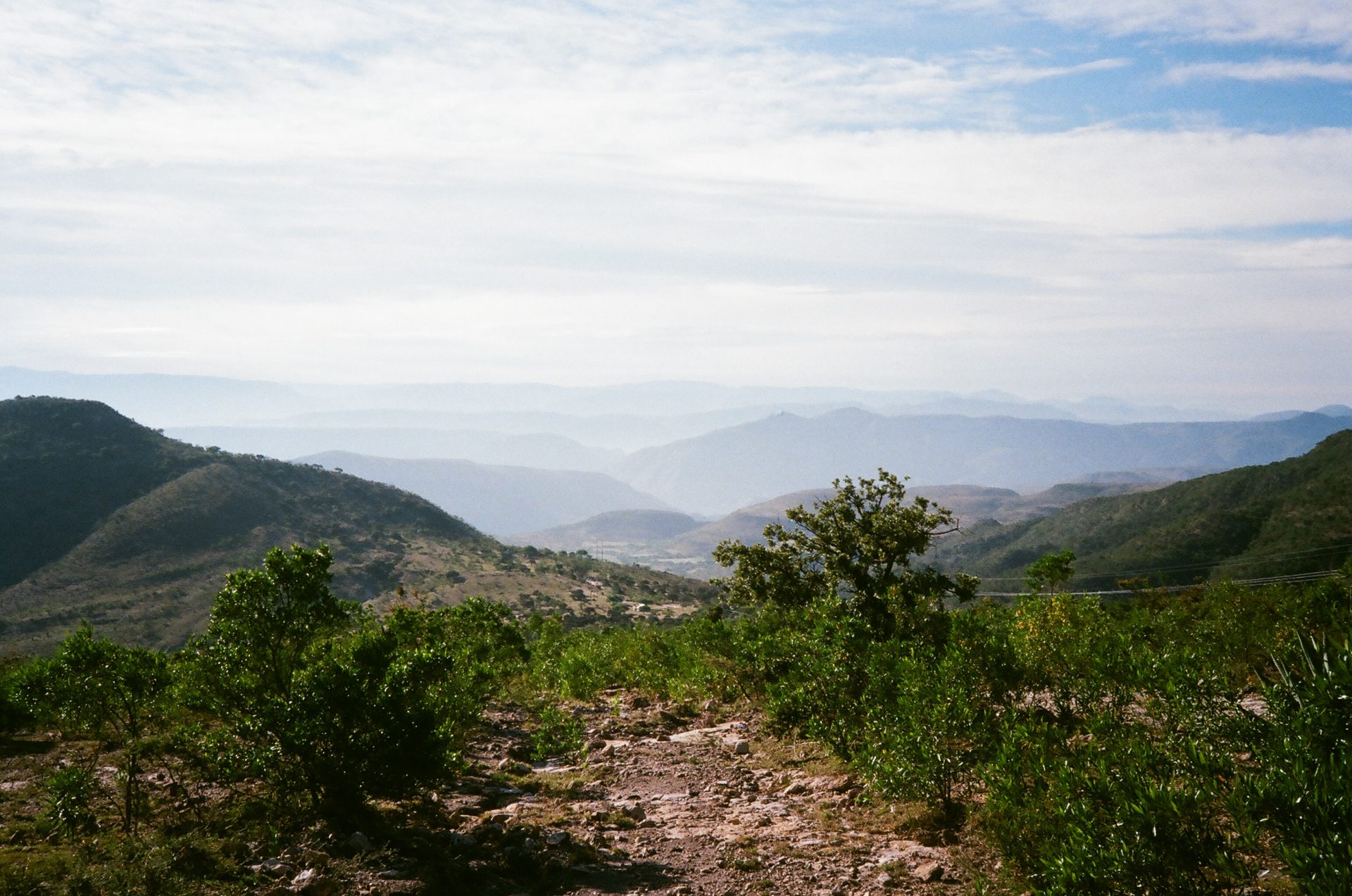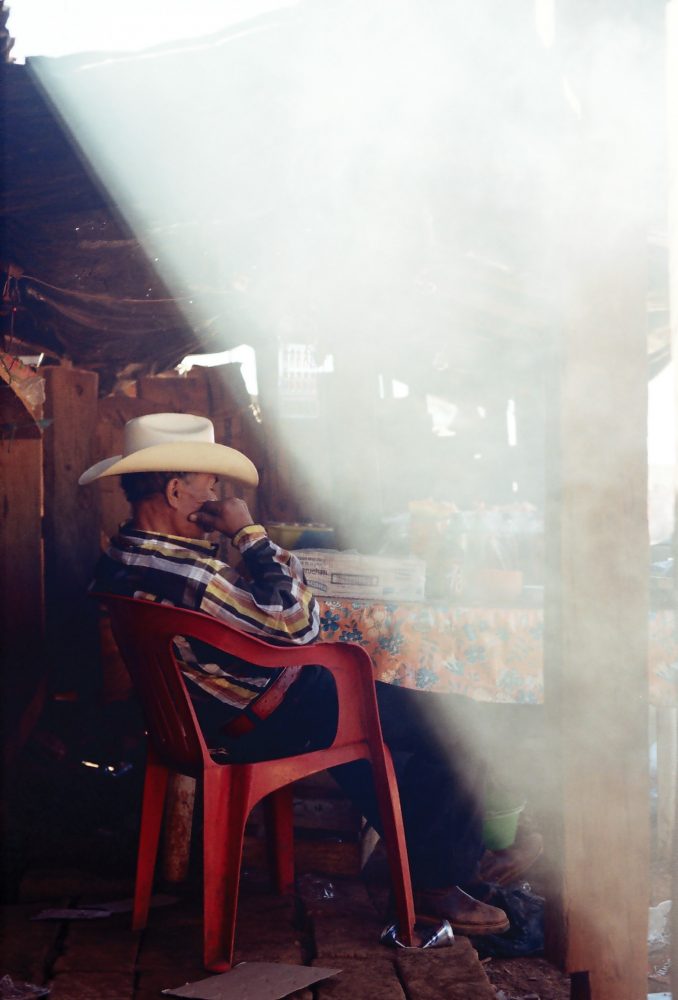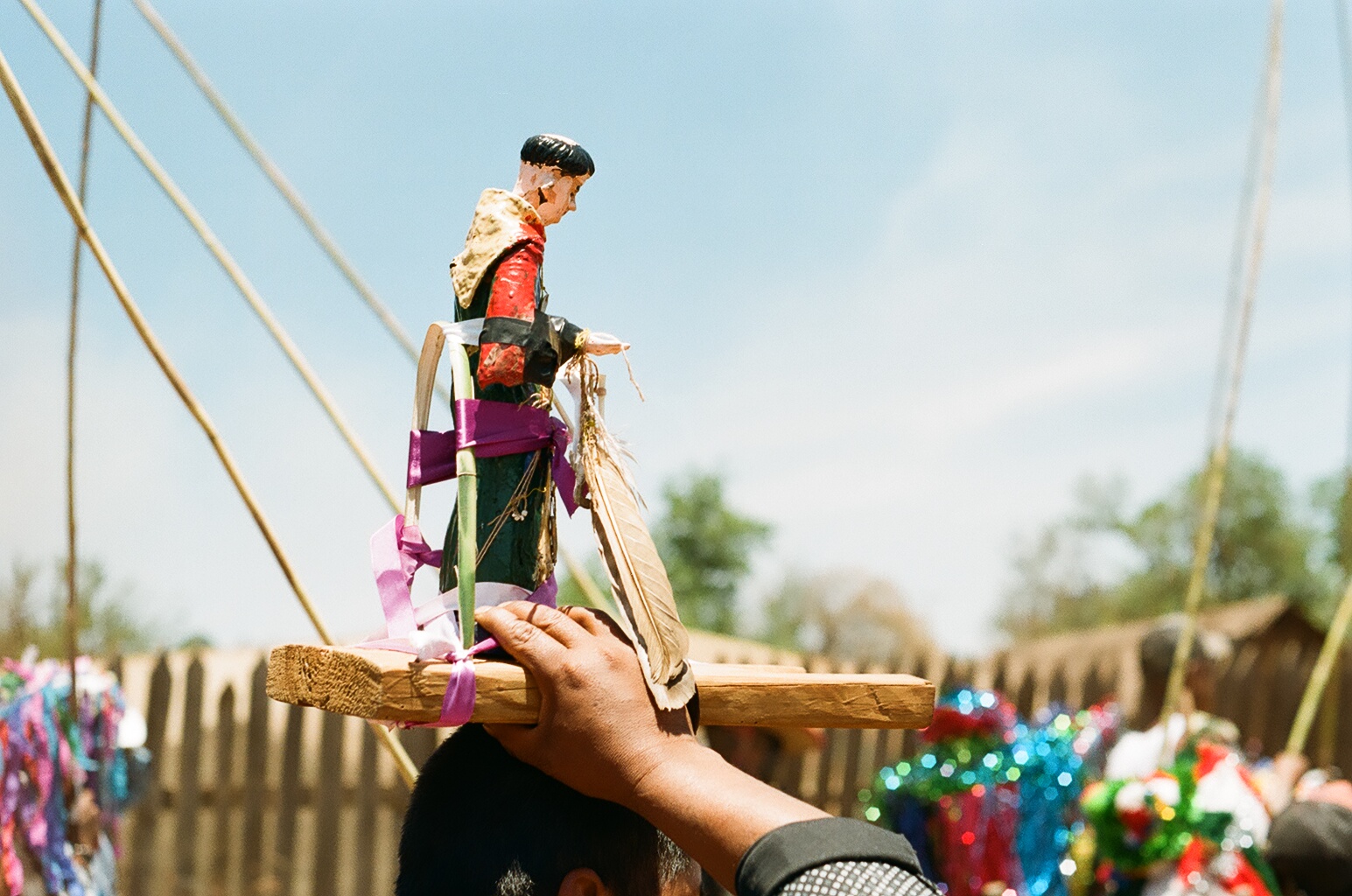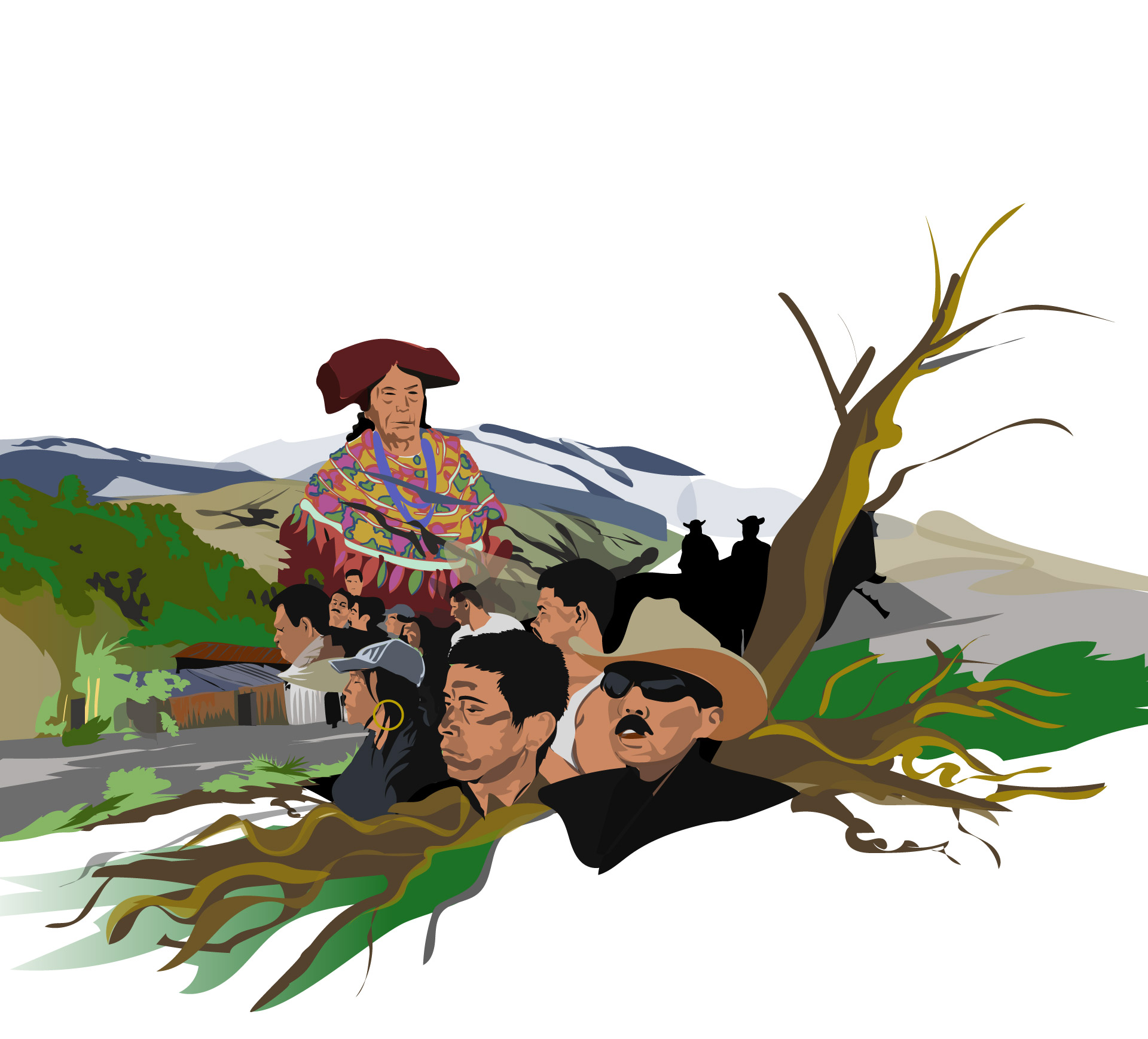Introduction – A Three-Headed Crisis.
The municipality of El Nayar, homeland of the indigenous Cora, or Náayari, people1 extends over some 5,000 km2 (1,930 sq. miles) of mountains and ravines in northeastern Nayarit. From 2000 to 2020, this was not only the area of the state where the Mexican army destroyed the most poppy plantations, but also the one that suffered some of the highest indices of murder, rape, and assault.2
This panorama of violence coupled with extractive economic activities immediately brings to mind the dynamics of several other “modern” industries imposed on this region in the 20th century; namely, mining, commercially-oriented deforestation, and industrial-scale cattle ranching. However, unlike these activities, which have always been –and still are– controlled by mestizo groups and a handful of Náayari caciques, poppy cultivation has been integrated into broader Náayari society in a much more complex way, and in some cases has become an important factor in the reproduction of local ethnic, political, and cultural identities.
In this chapter, we analyze these ambivalent processes of integration, and relate how interventions by mestizo elites through the Mexican government’s “war on drugs” and cultural, economic, and political “development” programs, in many ways constitute a war on indigenous identity. In a most ironic twist of fate, however, these initiatives have not only converted subsistence Náayari farmers into more efficient drug producers, but also helped to transform their identities into a powerful defense mechanism against violent domination by the State and the numerous organized crime groups that operate in the area.
Analyzing the ways in which poppy cultivation has affected the Náayarite offers one example of how the ethnic, political, and economic identities of Mexico’s indigenous peoples are influenced by their participation in an illegal transnational industry. From a local-level perspective we will see that the effects are multiple and often contradictory. The local analysis of the market for poppy production in the mountains of Nayarit perfectly illustrates dialectics of reconciliation and resistance, and “inclusion” and autonomy, thus revealing the misleading character of the “modern” / “traditional” dichotomy when examining topics of this nature.
Poppies and Náayari autonomy
As several studies have demonstrated, the ratification of the North American Free Trade Agreement (NAFTA) in 1994 brought about a radical liberalization and transformation of peasant life in Mexico.3 In this context of greater international commercial competition, poppy cultivation has allowed the Náayarite to accumulate capital inside their communities. The expansion of a new model of agricultural production based on the extraction of opium gum has led to the expansion and monetization of the economy of the Sierra at a rather fast pace over the past three decades. The income generated by commercializing opium has also helped reduce the expulsion of laborers from Nayarit’s indigenous communities in search of employment in the neighbouring mestizo regions of the state and elsewhere in northern Mexico, and contributed to lowering rates of migration to the United States.
But the importance of poppies to the Náayarite has also transcended the economic sphere. In the face of the brutal imposition of the neoliberal model in their homeland (patria chica), poppy cultivation has allowed the Náayarite to continue practicing what they call el costumbre (“custom”); an interlocking complex made up of descent-group and communal-level rituals, church-based festivals, and faith in the power of saints, ancestors and pre-Hispanic gods.
In contemporary Nayarit, the opium trade have been integrated into these traditions, as families use the proceeds of this illicit activity to help cover the costs of the fiestas, ceremonies, dances, sacrifices, and pilgrimages that constitute the annual cycle of costumbre. In consequence, costumbre and poppy cultivation have become ever more tightly interwoven.
For centuries, costumbre has defined Náayari ethno-cultural identities and regulated the sociopolitical organization of their communities.4 In contemporary Nayarit, the opium trade have been integrated into these traditions, as families use the proceeds of this illicit activity to help cover the costs of the fiestas, ceremonies, dances, sacrifices, and pilgrimages that constitute the annual cycle of costumbre. In consequence, costumbre and poppy cultivation have become ever more tightly interwoven. The agricultural rites that implore gods and ancestors to provide their communities with sufficient rain, protect them from hailstorms and plagues, and guarantee good corn harvests, are also now viewed as essential to successful poppy cultivation and to securing protection from soldiers, police, hitmen, and the thieves who strive to steal their opium gum.
The new meaning of these rites has transformed certain elements of local identities. For example, women and men have incorporated the poppy into the designs of their traditional apparel by embroidering images of the plant and flower on their brightly-colored shoulder-bags and the borders of their skirts. Especially for those young people born during the apogee of poppy farming, being known locally as “an opium gum-producer” (gomero), has become an important aspect of their ethnic identity, nourishing a dynamic that has even led people to declare: “I grow poppies, therefore I am Náayari.”

At the same time, “indigenousness” provides Náayarite with defense mechanisms and strategies, both protective and adaptive, against the pressures that come with opium production. One expression of this is the fact that the gomeros tend to speak exclusively in the Náayari language when communicating among themselves by walkie-talkie (known locally as radios). This tactic means that outsiders are unable to understand the messages they transmit and warnings they issue regarding the movements and activities of soldiers and police forces in the zone, or of the groups of cartel gunmen that periodically invade the Sierra with the aim of enforcing or seizing control of local drug plazas (centers for buying and selling drugs) and trafficking routes. Similarly, women elude interrogations by soldiers, police, and other armed actors by pretending, selectively, that they neither speak nor understand Spanish.5 In these and other ways, poppy cultivation has reinforced the everyday use of the Náayari language in numerous of the spaces, both public and private, most associated with “modern” life in the Sierra.
Finally, in the context of the government’s war on drugs, costumbre allows the Náayarite people to reaffirmtheir struggle against the many external forces that seek to dominate them and their territory. During certain religious fiestas, for example, we have watched as participants, ironically, don the garb of soldiers, police officers, or emblematic figures of politics or the drug trade, as in the following scenario.
In one Náayari community I was initially surprised to see then-president Peña Nieto –his bare chest and legs smeared with white clay and red ochre, slick with sweat and carrying a heavy wooden sword– doing ferocious battle with a similarly scantily-clad ‘El Chapo’ Guzmán in the midst of that year’s raucous week santa festival. The cries and whoops of the other festival participants crowded around this strange pair in Spanish and in Náayari: “Get him, Chapito!”, “Long live the president!”, and “Watch out he doesn’t escape you again, Peña!”. Far from undermining this ‘traditional’ fiesta, they fit perfectly with the burlesque at its center, allowing young náayari men to mock and ridicule and for once assert their power over two of the most powerful men in the country.
This anecdote perfectly illustrates how through rites of this kind, combining the “traditional” with the “modern,” the Náayarite subvert the dominion of powerful external actors, confront the acculturating pressures of Mexican society, and reinforce the power of local identities and practices, a process in which poppies have gained great importance in recent decades.
The challenges of opium gum for Náayari society and identity
Upon shifting the focus to more structural questions, however, it becomes clear that poppy cultivation has propelled radical social, cultural, and political changes in the Sierra. First, the ever-present specter of losing the fruits of their opium harvests to government eradication campaigns, hailstorms, sudden frosts, or insect plagues have led many Náayarite to invest in small-scale irrigation infrastructure and purchase commercial fertilizers and pesticides. The installation of gravity-fed irrigation systems has forced poppy farmers to move their plantations closer to the streams that traverse the outlying areas of their communities and, often, mark boundaries between different communal or clan territories. As a result, the irrigation of poppy fields has caused territorial conflicts between communities and/or clans that, on occasion, have broken out in violent confrontations.6
It is difficult for them to simultaneously cultivate corn, a plant of crucial importance for their ritual –and, hence, social and political– life, as well as for the daily subsistence of their families. One result of these adaptations is that some Náayarite have gradually been transformed into full-time producers or even traders who specialize in opium, leaving their subsistence activities behind.
Second, the increasing use of fertilizers and pesticides has shrunk farmers’ earnings. In an attempt to obtain higher yields, some Náayarite began to plant larger fields, but this forced them to take measures to protect the flowers from thieves who sneak in, slice the bulbs (rayar), and steal the gum, especially during nights of the harvest season. This forces the growers to spend more time out in fields hidden in the Sierra far from their homes and villages (rancherías). The problem that arises is that it is difficult for them to simultaneously cultivate corn, a plant of crucial importance for their ritual –and, hence, social and political– life, as well as for the daily subsistence of their families. One result of these adaptations is that some Náayarite have gradually been transformed into full-time producers or even traders who specialize in opium, leaving their subsistence activities behind. These men are now more like peasants or merchants who happen to speak an indigenous language, rather than Náayarite with an identity defined, above all, by their adhesion to costumbre.
Finally, the very practices of costumbre itself have been altered not only by drug production, but also by consumption, especially by the growing use of methamphetamines (“crystal”) commercialized the same traffickers who arrive in the Sierra to purchase opium gum. We were able to observe in the field how crystal was first integrated into the celebrations that followed a profitable opium sale, on a par with people’s expenditures on beer and tequila. Later, we came to understand how it helps young people withstand the physical challenges of some of the most important fiestas of costumbre. In some communities, in fact, the use of crystal and excessive alcohol consumption made possible by income from sales of opium gum have increased the danger inherent in participating in fiestas like those of Easter Week. Our fieldnotes reveal the dimensions of this problem:
“Over the last few years there’s been a very obvious –and rather alarming– rise in the number of people smoking far too much crystal meth, especially during Easter. This year a lot of friends who’d previously sworn to me they had no intention of ever going near the stuff were using it to resist the cold, sleepless nights – and the damage caused by the sables [long, heavy wooden swords] they fight each other with… Although, that said, this year a bunch of the guys working for the comisariado had been armed with machetes and were running around doing a decent job of stopping any sable fights going too far —even the wildest ‘devils’ didn’t want to mess with cold steel…”
Fieldnotes – Easter week 2016.
The outbreaks of violence that arise among young men while drunk or high on crystal (encristalizados, as locals say) during these events weaken community bonds, diminish the authority of the elders, and result in residents forgetting their ancestors’ entreaties to safeguard the Náayari world and its people.7.
The poppy crisis in the Sierra of Nayarit
Beginning in 2017, a precipitous decline in the value of raw opium gum in the Sierra of Nayarit brought even more clearly into focus the complexity and contradictions inherent in the relation between the Náayari people and poppies. By mid-2018, the price had fallen to a historically low level of just 8,000 pesos ($420 USD) per kilo. According to our observations and interviews, a hectare of poppies produced a gross annual income of just 64,000 to 80,000 pesos ($3,330-$4,160 USD), a drop of over 50% in one year. Once labor costs, the risk of being jailed or killed, and production inputs –including greater expenditures on fertilizers, pesticides, irrigation equipment, and food purchases (to replace the crops they ceased to grow to attend their poppy plantations)– were incorporated into their calculations, many Náayarite found that opium production had suddenly lost much of its attractiveness as a subsistence strategy.

The resulting decrease in poppy production is mirrored by an increase in the number of residents once again leaving their homes in search of work in nearby cities or agroindustrial operations on the coast of Nayarit. These dynamics bring with them the same consequences that migration has always had for these migrant laborers: poor wages, physically uncomfortable and demanding work, and exposure to any number of risks and abuses. For example, within the world of intensive commercial agriculture – particularly tobacco production – Náayari laborers run a high risk of being poisoned by pesticides. Finally, their isolation from the Sierra for long periods of time ends up disarticulating Náayari families and the communities to which they belong, reducing their ability to reproduce their culture.
A second key aspect of this scenario is that some Náayarite who had contact with the drug cartels through their activity as independent poppy growers have been hired as peons on plantations in the sierras of Sinaloa and surrounding areas in the states of Durango and Chihuahua. One young man narrated a recent trip to those regions:
“… with my cousins first to Culiacán, then in an old Sierra school-bus up to Soyotita, where my uncle met us up and took us off in his pickup along a crazy, crazy road deep into the mountains, that road was scary stuff, man! At last we arrived in a tiny village, totally surrounded by huge poppy fields… In ten days we harvested 47 kilos of gum, which was still worth 32 pesos a gram at that time; but we were paid 10,000 pesos wage, plus food and travel costs. There was a kitchen in the camp next to the fields, staffed by Tarahumara women – they talked to us in their language and we replied back in Náayari [laughing]. My uncle and some other cousins were there for a few weeks before we arrived to help out —the boss must have got 100 kilos that season!”
Interview – April 2019.
However, other Náayarite who do not have such good relations with capos in the so-called “Golden Triangle,” and end up working for subsistence wages that do not exceed 150 or 200 pesos per day. In these cases, whole families of men, women, and children live in unhealthy conditions in temporary camps set up near the poppy fields, where they are at risk of suffering disease and are at the mercy of violent abuses. Far from their homeland and integrated more strongly than ever into the illicit drug industry, these laborers live disconnected from the practices that structure Náayari political and social life even more than the migrants who go to the coast. My fieldnotes from May 2018, contain the following commentary:
It’s the day before Semana Santa begins, and it’s still pretty quiet here in the cabecera […]. The shopkeepers are miserable, as even those náayarite who haven’t left the region have headed back to their family ranches in the Sierra, as they can’t afford life in the ‘town’, where “everything costs money…” As one man told me as we sat drinking a Coca-Cola near the church: “the town is really abandoned”.
Field notebooks – 2018

According to interviews held in late 2020, the selling prices of gum have not improved much in recent months, but this is fomenting a new dynamic that may turn out to be more positive in the long term. In effect, various families have decided to abandon the communal and municipal headtowns (cabeceras), and their more “modern” lifestyle, to return to ancestral ranches in more remote areas of the Sierra where they plant corn, beans, and squash, keep a few animals, and hunt deer and other wild animals. Some informants argued that if their forebears had been able to survive in that way, by exploiting the ecological niches that their mountainous terrain offers, then they could do so too.
At the same time, they hope this will help them and their families to escape from the various forms of violence –brawls among drunks, abuses by security forces, kidnappings by armed goons, and the dangers of crystal addiction– that have spread throughout the Sierra and worsened in recent years. These developments make life in the Sierra even more difficult and, in the opinion of many, seem to be leading their costumbre to perdition. As a result, some of our interviewees perceive the ongoing decline of the opium gum market as a watershed between, on the one hand, a period of relative material wealth accompanied by moral and spiritual degradation and, on the other, a return to the “traditional” state of things, when incomes were lower but people could live better, far removed from the reach of teachers, merchants, soldiers, drug-traffickers, and from “Mexican” culture and the mestizo population in general.
Conclusion
As we have seen, studies of the integration of the poppy economy in the sierra of Náayari must be undertaken with caution and awareness of nuances on the part of outside observers.
The context of the Covid-19 pandemic has contributed an additional element to the various adaptive practices adopted by the Naayarite in the face of the assaults of the surrounding world. While communities have closed off as a way to protect themselves from the contagion of the virus, some informants hoped that the pandemic’s effect on global supply chains would lead to a revival in the demand for Mexican-made heroin in the U.S., which might raise the local price of opium and, once again, provide greater economic fluidity in the Sierra.
However, and in contrast to what we have observed in poppy-growing zones in the states of Guerrero, Sinaloa, and even certain regions of Durango that border on Nayarit, local networks of buyers and traffickers do not seem to have increased the prices offered to Náayari gum-producers. Given the absence of alternative sources of income, we imagine three scenarios for the Sierra: first, a massive exodus in search of employment; second, a pronounced movement back to a more “traditional” way of life based on subsistence agriculture and the practice of a “purer” costumbre at the family level –but without the legendary fiestas made possible by the earnings from poppy cultivation–; or, third, a fragile combination of these two dynamics in a context marked by enormous uncertainty.
Notes
- The plural form of Náayari. ↩︎
- México Unido Contra la Delincuencia (MUCD), Atlas de Homicidios 2018 ↩︎
- GREENBERG, J.B., BROWNING-AIKEN, A., ALEXANDER, W.L., WEAVER, T. (eds.), Neoliberalism and Commodity Production in Mexico, University Press of Colorado, 2021. ↩︎
- For additional information on Náayari costumbre, see COYLE, P. From Flowers to Ash: Náyari History, Politics, and Violence, University of Arizona Press, 2001. VALDOVINOS ALBA, M., “Acciones e interacciones en el sistema normativo cora”, in. ALVARADO SOLIS, (ed.), Sistemas normativos indígenas huichol, cora, tepehuano y mexicanero, CDI, Mexico, 2009. ↩︎
- MORRIS, N., “Serrano Communities and Subaltern Negotiation Strategies: The Local Politics of Opium Production in Mexico, 1940–2020”, The Social History of Alcohol and Drugs, Vol. 34, n°1, 2020. ↩︎
- MORRIS, N., Soldiers, Saints and Shamans, University of Arizona Press, 2020. ↩︎
- COYLE, From Flowers to Ash, op. Cit. ↩︎

